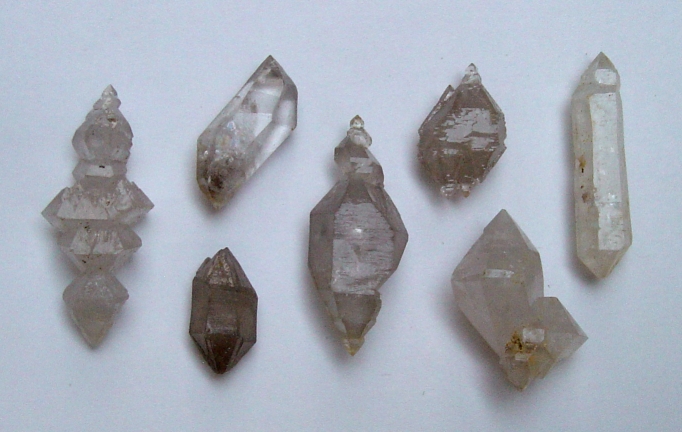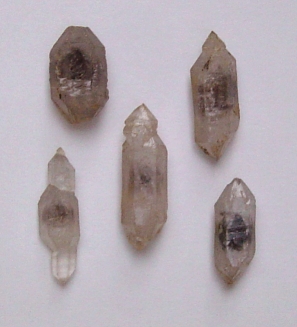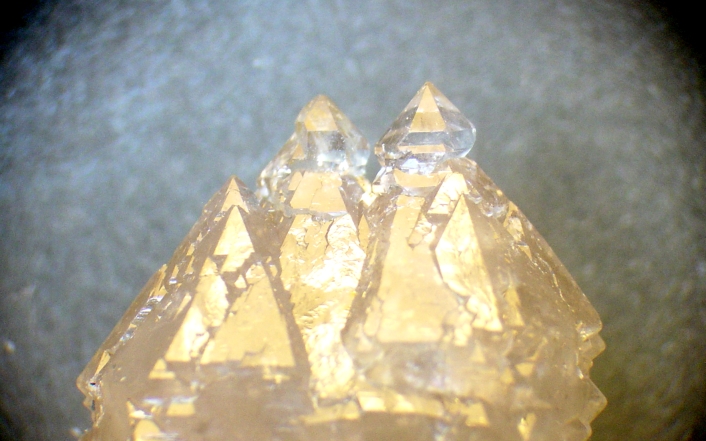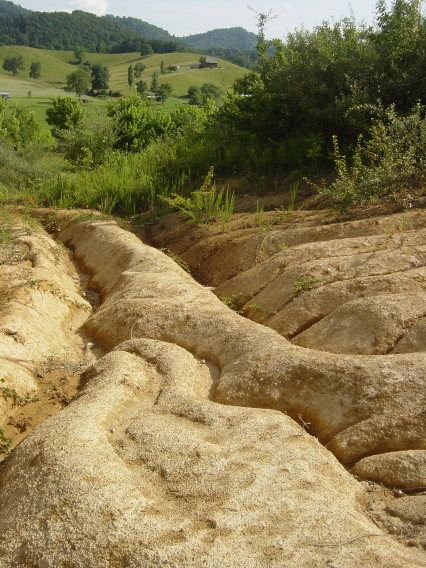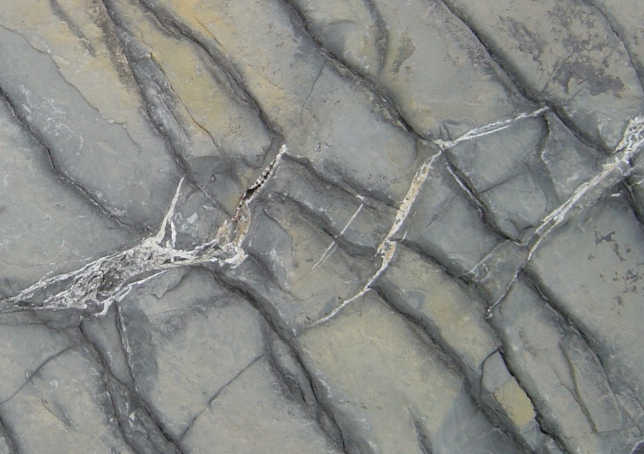Quartz
Crystals near Saltville, Virginia
|
| Crystals occur near Saltville in
dark limy shales and shaly limestones stratigraphically
above the post-Knox unconformity. Most are found in light
colored residuum, but they are also seen in unweathered
bedrock. A surprising variety of morphologies can be
found. They are distinct from crystals encountered so far
in Tennessee due to this variety being in a
post-unconformity setting. Habits include both prismatic
and bi-pyramidal doubly-terminated crystals occurring
side by side, many with small "capping"
crystals at both ends. Tectonically, these are in the Saltville thrust sheet above the Saltville Fault which comes to the surface over two miles to the northwest. That area is long known for salt seeps and brine wells, and gypsum mining has a long history as well. Halite (rock salt) and gypsum occur at depth below the fault and were heavily involved in the shearing and deformation (Whisonant, 1966). It is likely any hydrothermal fluids in the system would have been saturated with sulfates, chlorides, and sodium due to their presence. Whisonant, Robert C, 1996. Geology and the Civil War in Southwestern Virginia: The Smyth County salt works. Virginia Minerals, Vol. 42, No. 3. Virginia Division of Mineral Resources, Charlottesville, VA 22903
Internal phantoms are common and suggest an early stage of equant stubby crystals of simple morphology. Their precise shape and outlines are indistinct, as the black central area is defined by the presence of large irregular inclusions as much as a defined crystal shape. No fluorescence, as from petroleum, is visible under a low power microscope. This sequence is in contrast to the "bipyramidal over prismatic" growth commonly observed in crystals in Tennessee, where overgrowths, and crystals from the Sevier Shale thought to be of later origin, are more commonly bipyramidal. Re-healing of broken surfaces can also be observed in some specimens, suggesting that growth took place during deformation of the surrounding rock.
Detail of one of the crystals from top of this page taken under a low-power magnification with two light sources. Most crystal faces are complex, with mirror-like faces the exception.
Gullies in residuum
above dark shaly limestones, where many crystals can be
obtained. There are excavations into bedrock where the
figures below were taken, just out of the picture to the
right.
The history of shearing and deformation is complex. These tension gash fractures are in a piece of local bedrock. They are small and narrow, but larger ones were likely present in the rocks that weathered to produce the residual soils. There are also stepwise offsets along the dark lines defining small rotated blocks. The upper right side of each one is rotated away from you by several degrees. Image area is about 2 feet wide.
|
